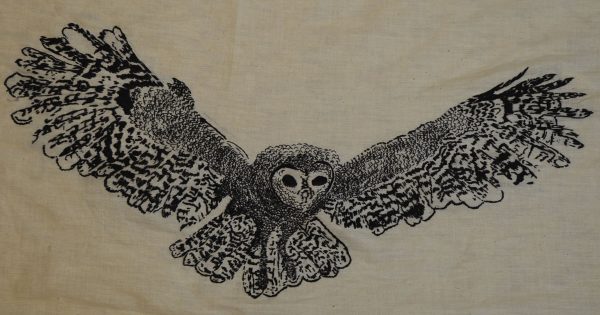Who is watching the demise of the northern spotted owl?
The northern spotted owl is the key species that ignited change and the protection of over 6 million acres of old growth forest in the northwest. In the 1970’s, the “Spotted Owl Wars” ensued between environmental activists and the logging industry. In the wake of these wars, and unknown to the owl, it is considered the icon species for initiating the preservation of an ecosystem for many species in these northwestern wild forests.
Yet today the northern spotted owl is critically endangered.
Researchers have been watching the demise of the northern spotted owl since the 1970’s. Horrific deforestation from the 1940’s to 1990’s in old growth forest was the major cause. The northern spotted owl was listed as endangered under the Endangered Species Act in 1990,
When laws were finally implemented to protect the habitat of the northern spotted owl, it was realized that they had a new competitor, the barred owl. Biologists theorize about why the barred owl moved west, but they do know they are seeing a decline in northern spotted owls that is directly related to the presence of the larger and more aggressive barred owl . They are competing for habitat, food and nesting grounds. I was sad to learn this, as my husband and I enjoy listening to and identifying the calls of the barred owl around our home in Vermont. Northern spotted owls are a critical component to the forest ecosystem in the northwest. Biologists have noticed a 7-8 percent decline per year in Washington State, less than 30% of their population remains.
Why can’t the Northern Spotted Owl get a break?
Remarkable facts about the Northern Spotted Owl: Spotted Owls can live for 16- 20 years, deep in the woods of old growth forests. Even with a 4 foot wingspan, they are silent when they fly. They cannot move their eyeballs, but they can turn their head 180 degrees. They eat only small mammals, such as flying squirrels. A spotted owl will respond to ecologists that mimic their call. That is how they track and study mating pairs and their territory. Despite their strengths and versatility to survive in old growth forests, these beautiful birds face deforestation, wildfires, climate change and the invasive barred owl.
To Kill or not to Kill?
The barred owl’s natural range was eastern North America into Canada. Evidence shows that as humans settled across the plains, they planted trees, altering the landscape, making it more attractive to barred owls to move west.
Barred owls are much more versatile than northern spotted owls. Most notably, the barred owl eats an immense variety of species including mammals, birds, amphibians, reptiles, fish, and invertebrates. They also reach a higher density per acre than the spotted owl. Combined, these two traits are changing the ecology of the northwestern forests.
As the barred owls move in, they are taking over nests of northern spotted owls and infiltrating their territory. Northern spotted owls are dying from starvation and, as they are getting pushed out of their safe haven, they are becoming victims of other predators such as the great horned owl.
Most interestingly the two species have been mating and creating hybrids. Typically, a male spotted owl will mate with a female barred owl. Perhaps this is natures way to save the spotted owl. However, the hybrid species are unable to mate with another hybrid species. Ecologically, the barred owls could lead to the decline of other species in the northwest. Evidence, collected from years of study, supports that the decline of northern spotted owls is directly related to the infestation of barred owls. This fact has brought environmental organizations to support and implement a barred owl management plan. Sadly they removed thousands of barred owls, scientifically using control areas, and in the zones where the barred owls were shot and killed by highly trained marksmen, they were able to preserve northern spotted owl pairs.
How long can we as humans try to control the infestation of a species on the move?
Ethically should we be actively altering wildlife, in a effort to repair damage we have already done?
What will come of the northern spotted owl/barred owl hybrids?
This is an ethical quandary that continues today.

Embroidered Northern Spotted Owl made for an Earth Bitch Jacket
References:
Oregon Public Broadcasting
Last Call: Tracking The Sound Of The Spotted Owl’s Extinction
In the Siuslaw National forest in Oregon two biologist are tracking the Northern Spotted Owl.
National Geographic
Killing One Owl to Save Another Owl?
Nat Geo Kids
Spotted Owl | Amazing Animals
International Owl Center
Northern Spotted Owl: Conservation Saga of an Old Forest Icon with Dr. David Wiens
